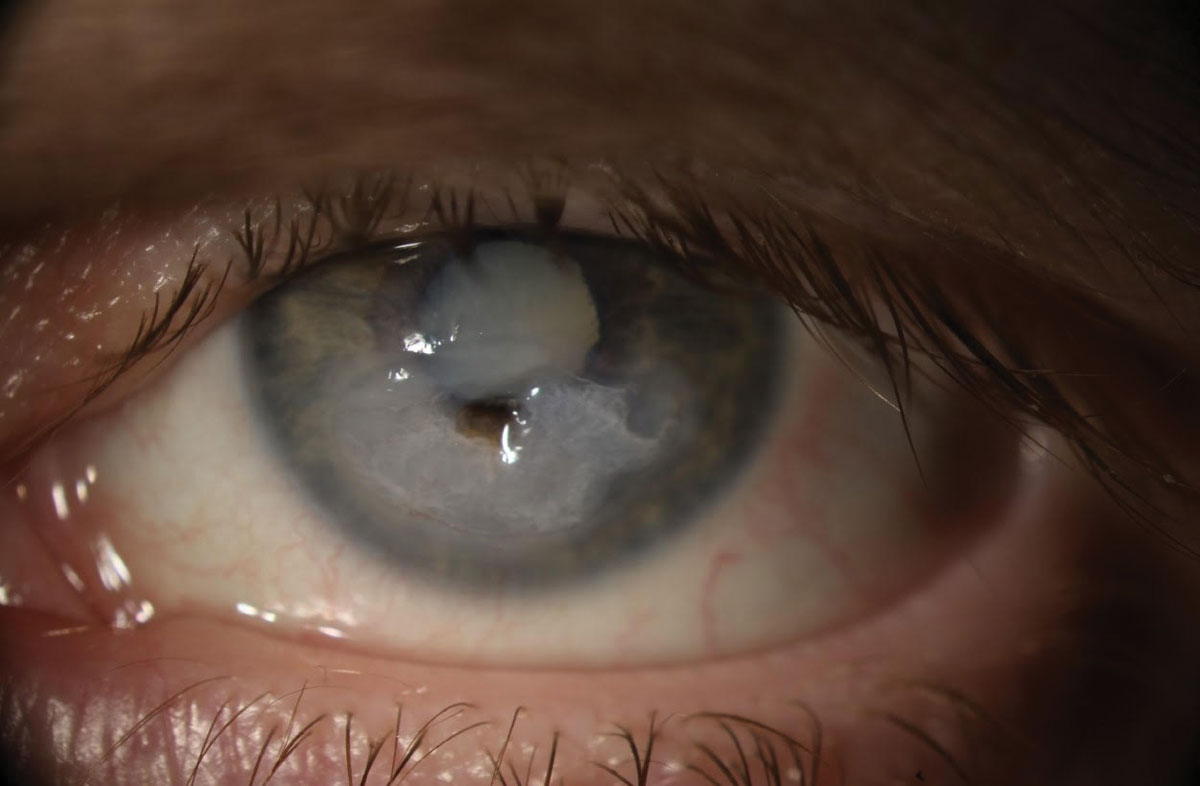 |
| The group treated with cenegermin had a lower recurrence rate than those treated with amniotic membrane transplantation. Photo: Megan Mannen, OD. Click image to enlarge. |
Since the clinical efficacy of amniotic membrane transplantation and cenegermin eye drops in neurotrophic keratopathy (NK) is very similar, researchers based out of Milan recently decided to compare the two in terms of clinical outcomes, recurrence rates and patient satisfaction. The team determined that, during 12 months of follow-up, patients treated with cenegermin (Oxervate) eye drops had a lower frequency of recurrence and longer periods free of recurrence. Note: two of the authors are consultants for Dompé Farmaceutici, the manufacturer of Oxervate.
The retrospective study reviewed clinical charts of patients with NK treated with amniotic membrane transplantation (group A) or Oxervate eye drops (group B), with at least 12 months of follow-up. Patient satisfaction was evaluated by a newly developed questionnaire investigating patient appreciation of NK treatment and satisfaction with outcomes.
At the end of treatment, complete corneal healing was observed in 13/15 (86%) patients in group A and 23/24 (96%) in group B. At 12 months follow-up, six out of 13 patients (46%) in group A and three out of 23 (13%) in group B showed recurrence of NK. Survival analysis showed that group B remained recurrence-free for a significantly longer period of time than group A. Patients in group B showed a significantly higher satisfaction compared with patients in group A (total score: 65.7 vs. 47.4), both in terms of patient appreciation of treatment (78.3 vs. 52.2) and satisfaction with treatment outcomes (60.7 vs. 45.4).
The study’s results also showed that visual acuity significantly improved after 12 months of follow-up in the cenegermin group compared with baseline values but not in the transplantation group. However, the investigators noted that comparison of mean changes of visual acuity after 12 months did not show a significant difference between groups. They believe the finding might be due to the small study cohort.
“The higher divergence between the two groups in terms of long-term outcomes and response to recurrence treatment compared with corneal healing immediately post-treatment can potentially be attributed to the difference in the mechanism of each treatment,” the researchers wrote in their paper. “Specifically, the lower recurrence rate in the cenegermin-treated group suggests that this drug induces corneal recovery by restoring sensory nerve supply. Our results, both from the perspective of clinical outcomes and from the patients’ reported satisfaction with treatment, suggest that the use of cenegermin should be considered a first-line therapy for moderate to severe NK.”
Sacchetti M, Komaiha C, Bruscolini A, et al. Long-term clinical outcome and satisfaction survey in patients with neurotrophic keratopathy after treatment with cenegermin eye drops or amniotic membrane transplantation. Graefes Arch Clin Exp Ophthalmol. October 11, 2021. [Epub ahead of print]. |


